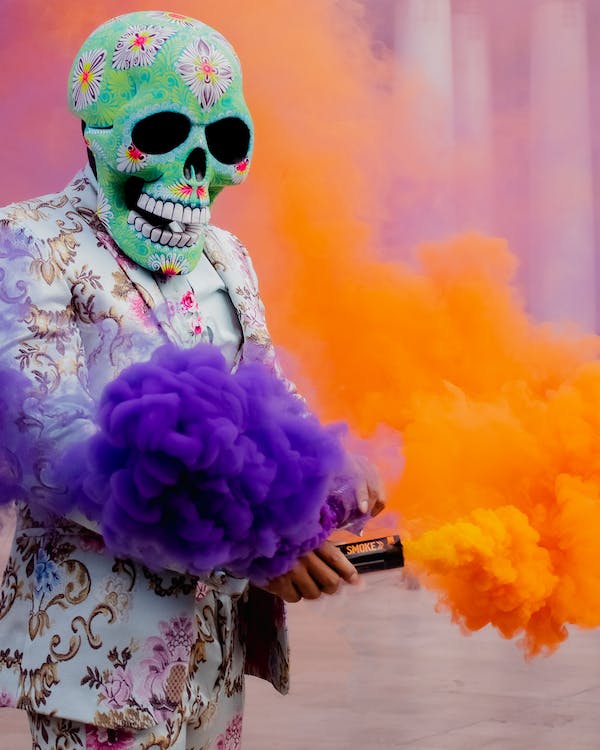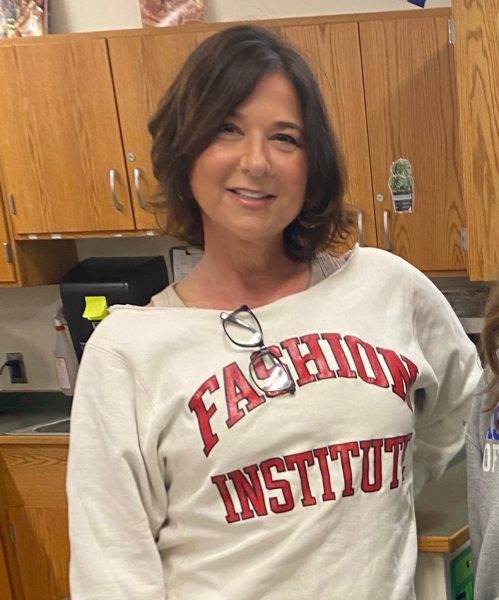Día de los Muertos: A Celebration of the Dead
Día de los Muertos, or Day of the Dead, is a national holiday that commemorates and celebrates family members who have passed on. While it is customary for most cultures to mourn deceased loved ones, this Mexican tradition welcomes death as a natural part of life. It dates back thousands of years, beginning with the one-month Aztec festival that celebrated the Lady of Death, Mictecacihuatl, who protected loved ones and helped them in the afterlife. The festival eventually became the basis of Dia de los Muertos, which is now celebrated all over the world, from Mexico to other Latin countries like Colombia, Ecuador, Honduras, El Salvador, and Nicaragua.
“Día de los Muertos is a Mexican holiday that has evolved over the years, the idea of the holiday is to remember and celebrate those who have passed and is meant to be a happy tradition to remember their lives,” world language teacher William Luzzi explains. “The belief is that the souls come back and spend that day with their families in Mexico and other places in Latin America. They decorate tombstones, make Ofrendas in their homes, and on the Ofrendas you can see a mix of the cultures celebrated,” he adds.
Día de los Muertos takes place over the course of two days where the dead and the living are reunited. It begins on November 1, and, according to the Day of the Dead website (dayofthedead.holiday), the first day is known as Día de los Angelitos (Day of the Little Angels). On this day, the spirits of all deceased children reunite with their families for 24 hours. The following day, Día de los Difuntos, is when the lives of departed adults are honored with a more “mature” theme, which includes alcohol and foods like atole. Noon of this day is when the celebration of all spirits begins, and people come together to celebrate, dancing through city streets with painted faces and costumes. The spirits of loved ones are celebrated with Calaveras, Flor de Muerto, and most importantly, Ofrendas.
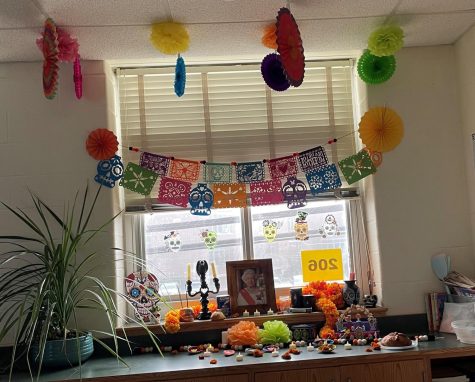
Calaveras, or skulls, are an extremely iconic symbol of Día de los Muertos. During the holiday, they are found everywhere, from decorations to candy and costumes. They are often smiling, which represents the friendly, welcoming view of death during the holiday. Flor de Muerto (Mexican Marigold) symbolizes the beauty and fragility of life. Its vibrant gold color and strong scent attract departed souls and encourage them to enter the land of the living. They are believed to be the pathway that guides spirits to Ofrendas (altars). Ofrendas are the most essential parts of the celebration. These offerings both honor deceased family members and welcome them back into the land of the living. According to National Geographic (nationalgeographic.com), they are often decorated with marigolds, photos, and favorite foods and drinks of the departed, who come to join the celebration after hearing the prayers and smelling the aromas.
This year, Luzzi’s Spanish classes honored Queen Elizabeth’s passing with an Ofrenda of her own. They decorated her altar with colorful papel picado (detailed decorative paper), marigolds, candles, Pan de Muerto, and a photograph of the respected monarch. Luzzi also celebrates the holiday with his own family: “At my home, we make an Ofrenda on my fireplace, and we have pictures of all family members who have passed away. Each year on the 1st, I will tell my son about these family members. We also make Day of the Dead Bread [Pan de Muerto] with my niece and son. It is really enjoyable and has become a special holiday for my family!” he exclaims.
Depending on the region, Día de los Muertos can be celebrated in multiple ways. Senior Ailen Castillo, whose family is from Honduras, celebrates Día de los Difuntos [deceased] differently than the traditional Mexican way. “In my culture, we decorate cemeteries, make colorful decorations like flower crowns, and listen to mariachi bands. It is similar to Día de los Muertos, but not exactly the same,” she clarifies.
It is common knowledge that Día de los Muertos originated from Native Americans honoring their dead. However, few know that putting up Ofrendas in the home is a new trend. Originally, families would go to the burial places of the deceased, take their time thoughtfully decorating it with all the things they loved, and stay there all night under the belief that their dead were with them,” explains Dr. Rojas, who is from Mexico and has lived there most of his life. Like nearly all countries, Mexico holds different trends between rural and city life. Dr. Rojas recalled leaving Morelia (the capital city of the state of Michoacan and his hometown) countless times on November 2 to “go to see the Día de los Muertos celebration of the indigenous people in Tzintzuntzan (a small town with a high proportion of indigenous habitants) because this festivity was observed more by natives in small pueblos (towns) and villages.” The festivity was indeed observed in the cities; however, it was not as bright and colorful as with the native population.
In more recent decades, it has become more common for Mexicans to try and connect back to their roots. Because of this, Día de los Muertos is going through a revival of sorts and spread all over the country. Today, no matter if you live in the tiniest town possible or in the most crowded city, Día de los Muertos is celebrated in a colorful way. Instead of simply going to Tzintzuntzan to view the festivities, kids now know a much more involved and colorful Día de los Muertos, with many schools often having them come early on the first of November for holiday-themed activities. This is then followed up by a day off of school where the entire town is decorated by colorful altars that include food, flowers, and other items cherished by the dead. Día de los Muertos as we know it today unites people of all sorts, both alive and dead.
Día de los Muertos is a unique holiday, as it brings all families together, both alive and dead, to rejoice in the beauty of both life and death. It is celebrated not just in Mexico, but all around the world, and while different regions have distinct customs, all share the same core meaning: bringing life back into the world of the dead.
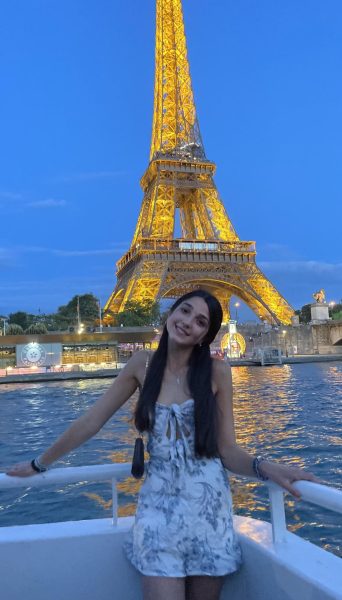
My name is Emily Franklin, and I am a member of the Class of 2025 and an editor for Horizon. I am part of the Key Club, Birthday Wishes Club, and Mathletes....
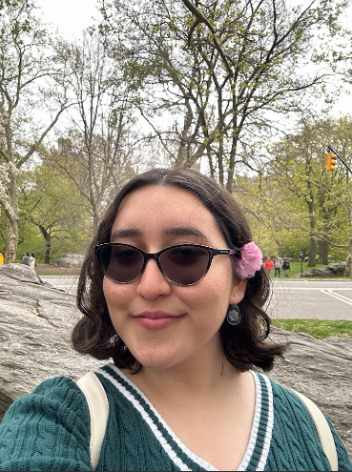
Hi! My name is Paula, and I’m a member of the Class of 2025. Along with managing the Opinions Section, I'm the President of the Culture Club, Co-President...
















